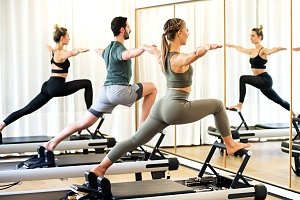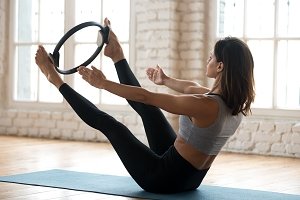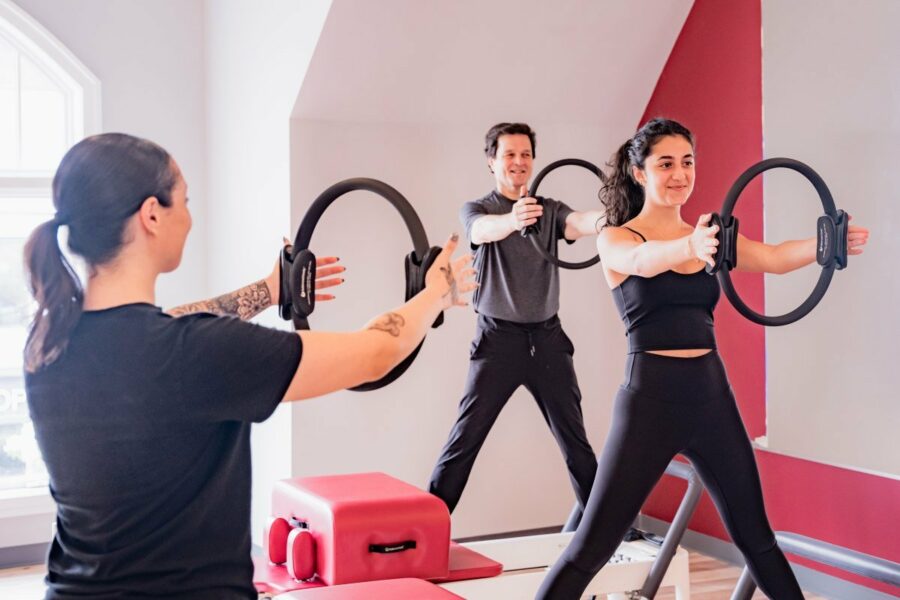Both Pilates classes and High-Intensity Interval Training (HIIT) offer great benefits. Choosing the best one for you, though, can be complicated, especially if you are not familiar with them. Understanding the basic premise of each practice can highlight areas that resonate with you. Read on to learn more about these workouts and how they differ to help you decide.
The Principles of Pilates
 In Pilates, the primary goal is to strengthen your core and improve flexibility and balance by performing controlled and precise movements. In these classes, you engage in low-impact exercises at a moderate pace while focusing on proper breathing and technique. At RTR Pilates, the exercises include using equipment known as a Reformer.
In Pilates, the primary goal is to strengthen your core and improve flexibility and balance by performing controlled and precise movements. In these classes, you engage in low-impact exercises at a moderate pace while focusing on proper breathing and technique. At RTR Pilates, the exercises include using equipment known as a Reformer.
This measured approach makes Pilates ideal for anyone including beginners, seniors, and people recovering from injuries. It builds a solid foundation of core strength, stability, balance, and flexibility.
The HIIT Training Style
High-intensity interval training, or HIIT for short, alternates short bursts of intense activity with brief recovery periods.
The stop-and-go nature of HIIT is designed to elevate your heart rate quickly with brief intervals of reduced rate aiming to boost calorie burn and cardiorespiratory endurance and improve anaerobic conditioning.
The high-impact nature of HIIT may increase the risk of injury. Proper recovery time is needed between HIIT sessions to give your muscles the opportunity to repair themselves and get stronger. Consider adding Pilates to your HIIT routine for improved stability.
Comparing the Approaches
Pilates and HIIT are both great workouts but have very different styles.
Pace
Pilates promotes controlled movements to bring the focus on technique, alignment, and precision. Alternatively, HIIT pushes to the maximum level of intensity but in short, repeated bursts.
Impact
Pilates was designed to be low-impact and gentle on the joints. HIIT involves high-impact moves that can be tough on joints if your form isn’t correct or if you have physical limitations. Proper technique is key for both practices.
Goals

Pilates targets core strength, balance, flexibility, and muscle tone. HIIT aims to burn calories, boost heart rate, and build cardiovascular endurance, which can make it a good option to combine with Pilates classes.
Mental Focus
Pilates has a meditative, mind-body focus because you’re concentrating on the finer details of each movement. On the other hand, HIIT requires intense mental focus to push through the fatigue of those bursts.
Who Is Pilates Best For?
Pilates is great for everyone! Here are some examples:
Beginners
Pilates is well suited to those who are new to exercise. The measured pace and focus on precise technique allow beginners to learn proper form and build coordination. Pilates builds overall strength starting from the core outward to provide a solid foundation. The low-impact nature significantly reduces injury risk compared to impact intensive workouts.
Those Recovering From Injury
If you’re healing from an injury, Pilates is a great way to gradually and safely return to exercising. The emphasis on precise movements re-educates the body and activates the right muscle patterns. A knowledgeable Pilates instructor can also guide you on modifications to avoid re-injury helping you to regain strength and mobility after an injury without taxing damaged tissues.
Seeking Mind-Body Benefits
The mindful approach of Pilates combines physical and mental disciplines. Those who practice regularly have found that it helps with reducing stress, boosting mood, and enhancing mindfulness. Pilates engages the mind to focus intently on technique and breath providing a meditative aspect encouraging relaxation of body and mind.
Looking to Improve Core Strength and Balance
The core muscles of the abs, back, hips, and glutes play a central role in Pilates. Conditioning these areas improves stability, posture, and alignment. Those concerned with back pain get great results in strengthening the core muscles that support the spine. The balance aspect also improves control and coordination.
Concerned About High Impact on Your Joints
For those with joint issues or who want to preserve long-term joint health, Pilates is far preferable to high-impact exercises. Compared to running or jumping, the controlled movements are gentler on areas such as the knees, hips, and shoulders. Pilates provides strength and mobility training without pounding the joints.
Who Is HIIT Best For?
HIIT workouts confer unique benefits for anyone who:
Is Seeking Maximum Calorie Burn
 The intense intervals of HIIT rev up metabolism and calorie expenditure. Short HIIT workouts can burn comparable calories to much longer steady-state cardio. The afterburn effect also causes calories to be burned at an accelerated rate for hours after a HIIT workout.
The intense intervals of HIIT rev up metabolism and calorie expenditure. Short HIIT workouts can burn comparable calories to much longer steady-state cardio. The afterburn effect also causes calories to be burned at an accelerated rate for hours after a HIIT workout.
Has an Existing Fitness Base
To avoid injury and experience benefits, a person should build a base level of strength and endurance before attempting any exercise program. HIIT workouts place considerable demand on the muscular and cardiovascular systems. Beginners can see progress by starting with Pilates before intensifying training.
Trust RTR Pilates to Unlock Your Fitness Potential
Pilates and HIIT cater to different goals and needs but they can effectively complement one another as part of a well-rounded fitness routine. Try blending Pilates for strength and flexibility with HIIT to improve your cardiovascular conditioning and burn more calories. Or consider the cardiovascular benefits of a Circuit Class at RTR Pilates.
If you’re new to Pilates and want expert guidance, turn to the knowledgeable instructors at RTR Pilates located in Northern Virginia, Washington D.C. and Maryland. We specialize in science-based, efficient Pilates classes that will empower you to discover your strongest, healthiest self. Contact us today to explore how we can guide you in achieving your fitness and wellness goals.



